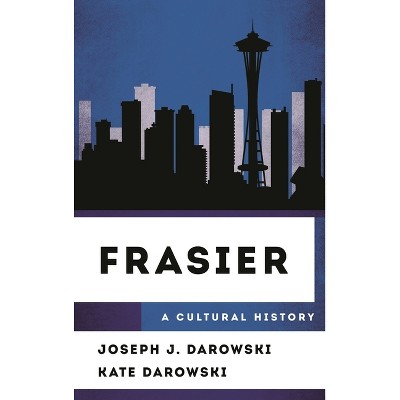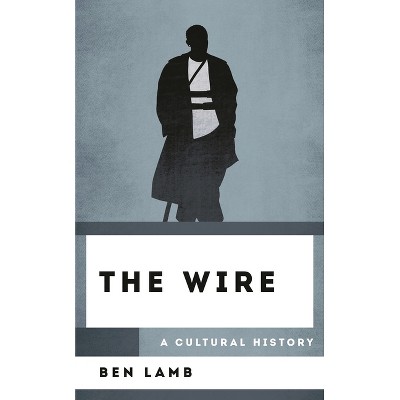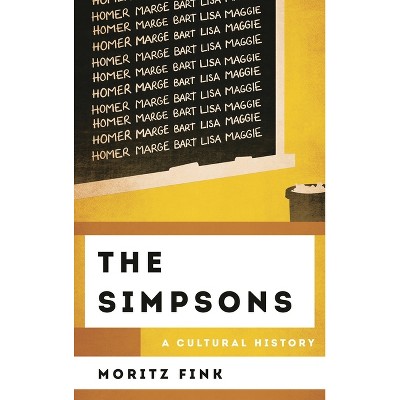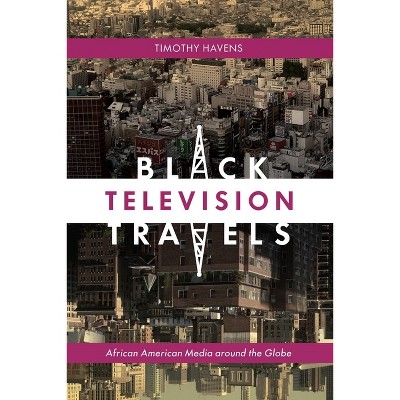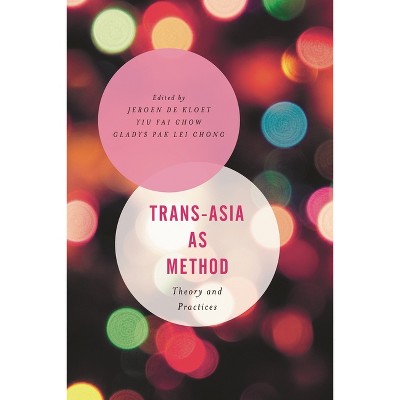Northern Exposure - (Cultural History of Television) by Michael Samuel (Hardcover)

About this item
Highlights
- This book revisits and celebrates the cultural legacy of the cult television series Northern Exposure.With a focus on its production history, fan culture, and individual episodes, it reveals the show's profound influence and argues its status as the prototype contemporary television series.
- About the Author: Michael Samuel is a lecturer in film and television studies at the University of Bristol.
- 208 Pages
- Performing Arts, Television
- Series Name: Cultural History of Television
Description
About the Book
This book revisits and celebrates the cultural legacy of the cult television series Northern Exposure. With a focus on its production history, fan culture, and individual episodes, it reveals the show's profound influence and argues its status as the prototype contemporary television series.Book Synopsis
This book revisits and celebrates the cultural legacy of the cult television series Northern Exposure.With a focus on its production history, fan culture, and individual episodes, it reveals the show's profound influence and argues its status as the prototype contemporary television series.
Review Quotes
Even non-fans of Northern Exposure will be enlightened by the cultural history of the series; extremely interesting read. The quotes listed for each episode makes for a more intimate read of what each episode was about. In short, all things related to Northern Exposure (but mostly unknown to most) will be found here.
In this entry in the Cultural History of Television series, Samuel takes a long look at Northern Exposure, a 1990s darling of both critics and viewers. Chapters highlight the show's unusual development (originally titled Dr. Snow, it was conceived by the network as a medical drama), the unique goal of its creators, and the enormous real-world impact filming it had on the small town of Roslyn, Washington--the Cicely, Alaska, in which the show was allegedly set. Samuel also considers just how a cult hit is formed and endures while also discussing the almost mythic origins of several of Northern Exposure's main characters. Fans will certainly find more than backstage nuggets here, and there is plenty on the performance history of the various cast members and how they were encouraged to shine in scripts that continually celebrated the weird, the wild, and the unexpected. With several appendices, including individual summaries of each episode, and a thorough bibliography, this title will enrich media, pop culture, and performing arts collections.
Michael Samuel's Northern Exposure: A Cultural History is just the type of book that you want it to be: Wry and comic when called for; seriously scholarly when necessary--just like Northern Exposure itself. Samuel's tone is unique in academia: His highly personal introduction sets the tone of the book--starting off with a wonderfully poignant reminiscence that leads to a full-blown scholarly assessment of this very important series. The format of the book follows others in the series, introducing readers to the series' production history; major characters; specific episodes; and ending with an assessment as to why Northern Exposure still matters. Samuel writes with a fascinating blend, a totally personal and fan-like approach that helps to make the critical theory in respect to the series all the more manageable for a general audience. In all, Northern Exposure is a welcome addition to the stunning collection of books put out by Rowman and Littlefield, each one an examination and a celebration of why television history matters.
Thirty years ago, CBS executives were quickly excited by a pitch for a formulaic hour-long drama about a recent medical school graduate who relocates from New York City to a remote Alaskan village. But that's not the version of Northern Exposure that eventually debuted on CBS in 1990. This history of Northern Exposure by Samuel describes how showrunners Joshua Brand and John Falsey tricked CBS into signing off on bland medical drama, then swapped it for their far more innovative series. Devoid of medical mysteries, the show chronicled the lives of the quirky residents of Cicely, AK (think Twin Peaks at its least sinister) and newcomer Dr. Joel Fleischman, who would reject rural Alaskan life and Indigenous traditions, then come to appreciate them. Samuel also explores how the show went from critically acclaimed to canceled to cult classic; he describes it as a forerunner of modern programming. Finally, he addresses the flaws in a seemingly progressive show: episodes dealt with Indigenous rights, same-sex relationships, and the environment, but there were also Indigenous characters who were played by non-Indigenous actors, homophobia, and stereotypical depictions of women.Fans will appreciate Samuel's focus on the real town that provided Northern Exposure's scenic locations, as well as his useful episode guide. TV historians will benefit from his research and compelling examination of a show truly ahead of its time.
About the Author
Michael Samuel is a lecturer in film and television studies at the University of Bristol. He has published widely in the areas of film, television, technology and video games in several books and peer-reviewed journals. He is the co-editor of a special edition of Critical Studies in Television dedicated to celebrating one hundred years of the BBC, as well as co-editor of Streaming and Screen Culture in the Asia-Pacific and True Detective: Critical Essays on the HBO Series.Shipping details
Return details
Trending Non-Fiction






